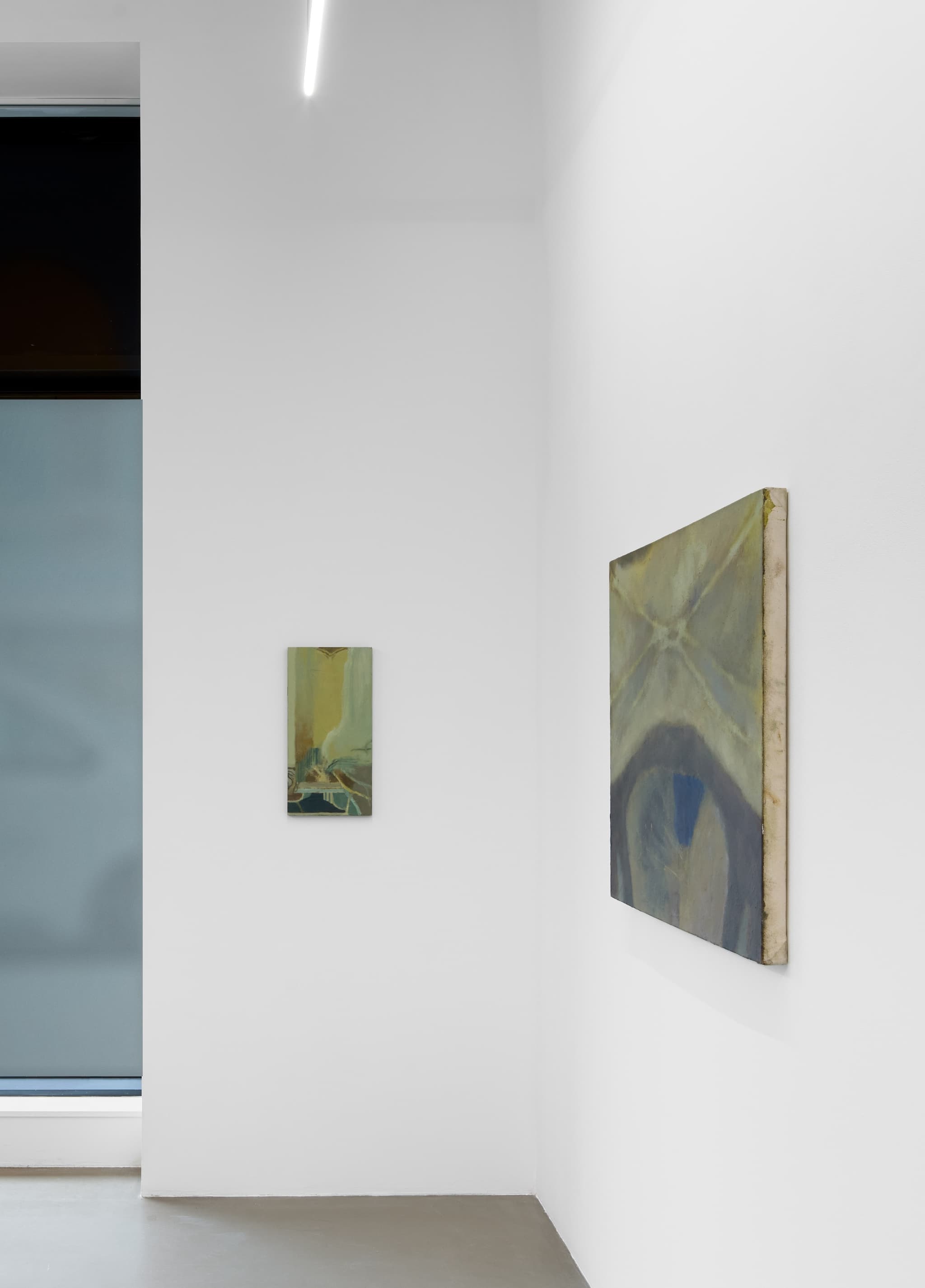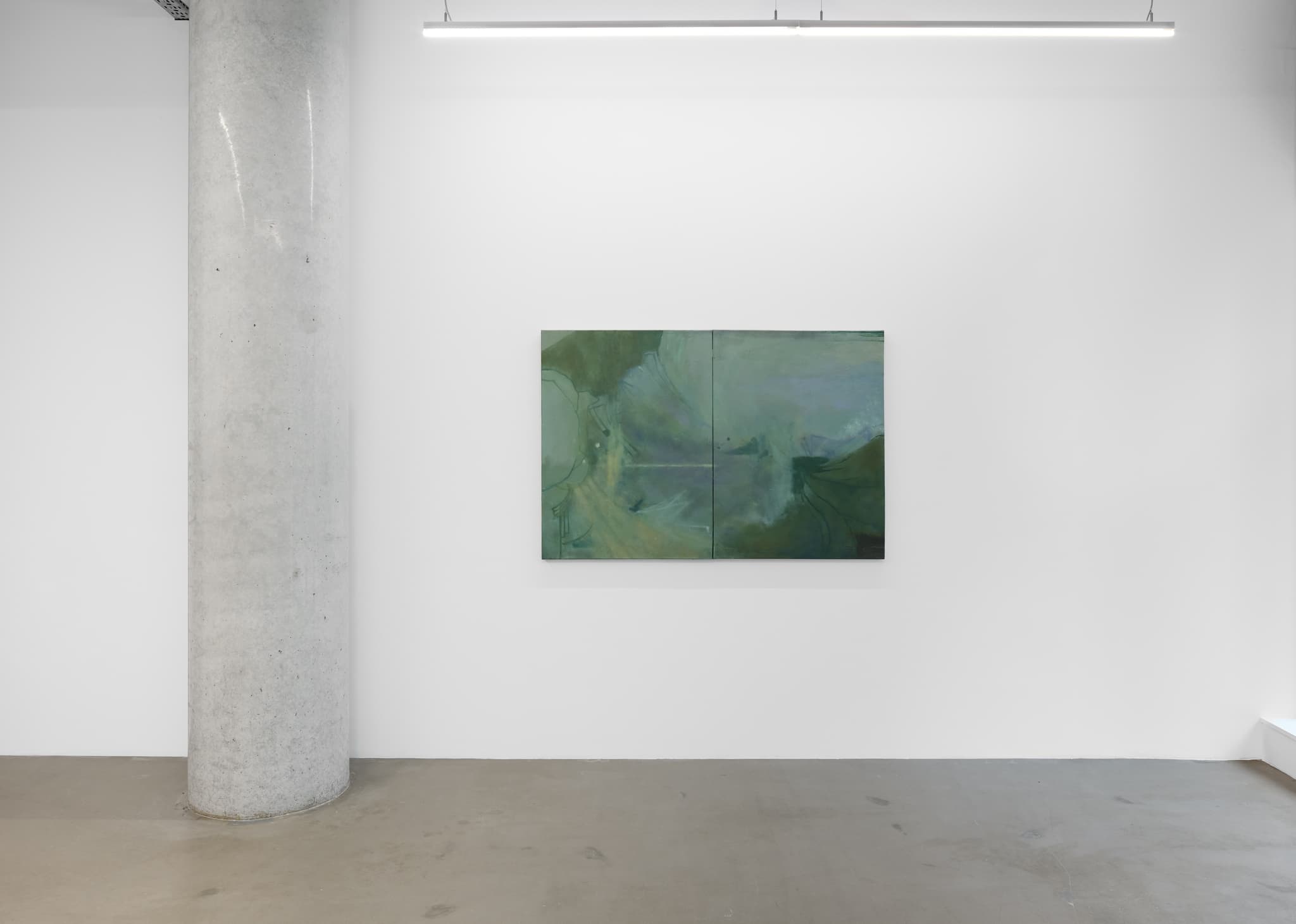Yi To
Terminal Lucidity
PNI, London

Installation View
Yi To
Terminal Lucidity, 2025
Project Native Informant, London

Installation View
Yi To
Terminal Lucidity, 2025
Project Native Informant, London

Yi To
Detail: Pelvis
2025
Oil on canvas
50.7 x 25.5 x 1.7 cm (20 x 10 x 5/8 in)

Installation View
Yi To
Terminal Lucidity, 2025
Project Native Informant, London

Yi To
A half-blown candle
2025
Oil on canvas
30.5 x 81 x 3.5 cm (12 x 31 7/8 x 1 3/8 in)

Installation View
Yi To
Terminal Lucidity, 2025
Project Native Informant, London

Yi To
Terminal Lucidity 01
2025
Oil on canvas
76 x 101.5 x 4 cm (29 7/8 x 40 x 1 5/8 in)

Yi To
Terminal Lucidity 02
2025
Oil on canvas
120 x 160 x 3.5 cm (47 1/4 x 63 x 1 3/8 in)

Installation View
Yi To, Time is the moving image of eternity, 2025
Terminal Lucidity, 2025
Project Native Informant, London
‘I want you to produce arguments which will convince me that this object is the remains of a living thing,’ visual anthropologist and cybernetician Gregory Bateson (1904–80) once addressed his students, a paper bag of cooked crab in hand.¹ This is the kind of provocation artist Yi To poses to herself when painting, with the result of such ‘arguments’ laid bare in the work.
We take the method of enquiry employed by Bateson’s students to understand this symmetry by way of an equally difficult question: what is a metaphysical painting? As theirs, our analysis shall proceed by interrogation, deduction, exclusion. It will involve a scraping back of content, and movements between the micro and the macro to destabilise the human-centric point of view. We start by taking a problem by anatomical fragment, which is to apportion the world its meaning by increasingly small piece. Her process of creation begins with an elementalism; the painting’s a priori is a grit-like primer made up of gesso mixed with marble dust. We first discover our artist’s abstraction is not only non-representational but reductive in strategy: ‘Pixels, molecules, cells, crystallography, qi, joints, ligaments, neurons, sounds, the breath between sentences, musical notes.’ ²
Tao (道) translates variously as way, guide, method, technique. In East Asian philosophy, tao describes how the universe shapes its course. Verse 42 of the Tao Te Ching, for example, narrates the logic of reproduction from unity, and accounts for the complexification of life: ‘The Tao gives birth to One. / One gives birth to Two. / Two gives birth to Three. / Three gives birth to all things.’ ³ To’s relationship to tao foregrounds the possibility of metaphysical paintings, as accruals of intensive, non-physical content. Sustaining such a practice is not without requirements, stakes and demands. A belief in the ‘beyond’; an open-ended nascency that refutes the finality of forms; an investment in that which is completely other to what can be grasped visually, and which is responsible for a luminous weirdness. But grasp we must; we spawn myriad theories of transmission and deep time; we take cues from archaic revivalism, uncanny recurrences, any intimation of a greater system. Perhaps pseudo-sciences are nothing but deviations or detours from the way, silhouettes of religious thinking that have become untethered from the body.
Simply because a painting is abstract, this does not immediately assume an absence of body. Rather, we may think of To’s abstraction as an expressive need to presence an absent body. Occasionally, motifs do gather up in something close to representational – a crease, a ligament, the shadow side of bone. For the body is the most abstract of things, and this is a cold, hard, fact. As advancements in physics have revealed, material beings are made up of so much abstraction, part molecular substance, part emptiness. But what conducts yin and yang, substance and emptiness, positive and negative space, or what orchestrates the materialisation of form? While some would say this is the workings of tao, and others, that familiar melancholy of being, our artist uses the mathematical concept of a ‘basin of attraction’ to explain how the paintings’ compositions are organised. The ‘attractor’ is an end-state that systems tend towards, with the ‘basin’ a gently sloping arena likenable to a field or sphere of influence, a setting, even, for the animist flows of qi.
Tai Chi is an ancient, philosophical movement practice hailing from China that involves the conscious manipulation of qi (氣). Translating as both air and vital energy, qi’s passage brings about the co-mingling of breath and spirit; an awareness of musculature; of unseen organs. Absence, then, also confers upon the inner workings of the body, its proximate otherness. It’s not by mere coincidence that certain of To’s compositions feature hollows or disembowelments, that is, spaces not just emptied but emptied out. The gape of a pelvis bone in one painting becomes a ‘basin’, a gathering, a summons, a gravity for converging attractions: ‘All streams flow to the sea / because it is lower than they are. / Humility gives it its power.’ ⁴
When Bateson asked his students to identify features of the once-living, it was likewise an invitation for them to conceive of themselves as future fossils having-lived. And indeed, ‘there’s this pool of information hidden somewhere’ for To ⁵ – be they sublimated memories or somatic imprintings – beyond the evaporation of soul, beyond the body’s degradation to sediment. We concede that ‘the pattern which connects’ ⁶ mediates a dialogue between the internal and the external – a spell of lucidity that makes us feel cradled by the wider structure of the world. We are comfortable in the knowledge that the beyond we know naught about appears to know something about us. ‘Terminal Lucidity’ refers to an unanticipated re-surfacing of mental clarity, buried memory or consciousness in dementia patients or the dying. As of 2025 there is still a lack of consensus among scientists about the phenomenon. While as-yet unconfirmed hypotheses speak bio-technically of a sudden discharge of neurotransmitters and peptide hormones, the primary question remains un-answerable, and that is the numinous ache of why.
Text by Elaine ML Tam
¹ Gregory Bateson, Mind and Nature (New York: EP Dutton, 1979), p.7
² Yi To, in an unpublished conversation with the writer, 22 February 2025.
³ Lao Tzu, ‘42’, Tao Te Ching, (New York: HarperCollins, 2006), trans. Stephen Mitchell
⁴ Lao Tzu, ‘66’, Tao Te Ching, 2006
⁵ Yi To, 22 February 2025
⁶ Gregory Bateson, Mind and Nature, 1979, p.8
Project Native Informant presents Terminal Lucidity, the first solo exhibition by Yi To. Showcasing a series of paintings exploring the materiality of fragmented bodies, the works engage with time as both an absence and accumulation. Compositions lie on this threshold of emergence between the tangible and immaterial. With soft tones that continuously reshape materiality, works unfold as a speculative fiction, where apparitions shift, mutate and dissolve on the canvas.
Yi To (b. 1995, Hong Kong) lives and works in London.
She graduated from the Royal College of Art in 2021, where she studied Painting. Her work has been exhibited in galleries internationally, including at Public Gallery, London; Gallery Vacancy, Shanghai; MAMOTH, London; Alice Amati, London; Deli Gallery, Mexico City and Hive Centre for Contemporary Art, Beijing.